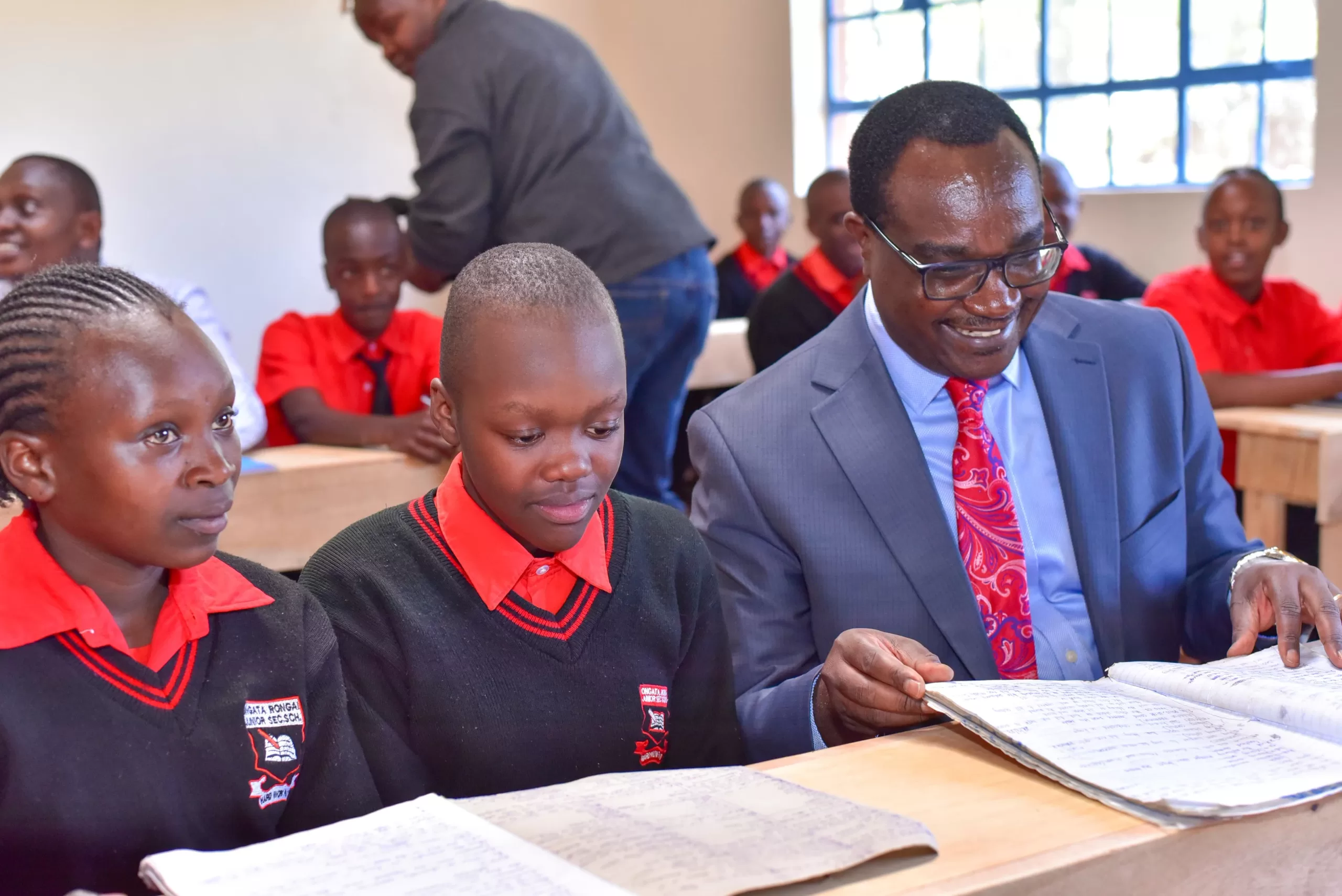Grade 9 Transition Exposes Infrastructure and Funding Gaps as Form 1 Classrooms Remains Empty.
The Competency-Based Curriculum (CBC), launched in 2019 under former President Uhuru Kenyatta, was designed to replace the long-standing 8-4-4 system that had been in place since 1985.
The new curriculum adopted a 2-6-6-3 structure: two years of pre-primary, six years of primary, six years of secondary, and three years of university education.
Former President Kenyatta envisioned CBC as a means to align education with students’ practical needs and to promote a hands-on learning approach.
From the outset, the CBC faced significant hurdles, particularly in teacher training, recruiting additional educators, and building the infrastructure required to support the new system.
These challenges persist years later, now under President William Ruto’s administration, where the transition of Grade 9 students has emerged as a critical bottleneck.
The Grade 9 Transition Crisis
For months, education stakeholders have expressed concern about the government’s readiness to handle the transition of the first Grade 9 cohort. This issue escalated after the task force on education reform approved the curriculum.
Uncertainty arose over whether Grade 9 students would be accommodated in primary schools, junior secondary schools (JSS), or secondary schools.
Despite these debates, the government eventually decided to domicile Grade 9 students in primary schools, pushing forward with the transition without addressing critical logistical challenges.
This decision has highlighted gaps in the system, raising doubts about the CBC’s smooth implementation.
The CBC introduced the Kenya Primary School Education Assessment (KPSEA) to replace the Kenya Certificate of Primary Education (KCPE) for Grade 6 learners transitioning to JSS.
After three years, students take the Kenya Junior School Education Assessment (KJSEA) before advancing to senior secondary school.
However, this adjustment has created operational challenges, as there will be no Form One admissions in January 2025 for the first time since 1985.
The absence of a Form One cohort is expected to leave secondary schools with underutilized classrooms and facilities, straining operations. Some schools have resorted to seeking financial contributions from parents to cover gaps caused by reduced enrollment.
Infrastructure Shortfalls
The government had pledged to construct over 16,000 classrooms to support the transition but fell short by 2,500 when schools reopened in January.
To address these gaps, Education Principal Secretary Belio Kipsang urged school heads to find alternative spaces and announced an extension of the classroom construction timeline by 30 days.
He outlined short-term solutions, such as consolidating classroom use and implementing rotational shifts to minimize disruptions to learning.
Kipsang explained that Ksh.16 billion would be allocated to complete the remaining classrooms within a month, with additional funding directed to the National Government Constituencies Development Fund (NG-CDF) to support construction efforts.
However, the government faces added pressure as the National Treasury has yet to release Ksh.48 billion in capitation funds.
Read Also: How to Access an Individual Learner’s KPSEA/KILEA Performance Report
Another significant challenge lies in the deployment of teachers. While the government has recently posted 46,000 JSS teachers and plans to recruit 20,000 more, questions remain about whether this will adequately address the student-teacher ratio in schools nationwide.
The persistent gaps in staffing and resources have led many to question whether the Kenya Kwanza administration may have overestimated its capacity to implement CBC effectively.
A Sector in Limbo
The CBC transition has sparked widespread uncertainty and operational inefficiencies. With no Form One class entering secondary schools, concerns about unused facilities and financial shortfalls have mounted.
Stakeholders are calling for urgent, comprehensive solutions to ensure the curriculum delivers its intended benefits.
The government’s commitment to fulfilling its promises is being tested as it works against tight timelines, financial constraints, and public skepticism. The education sector waits to see if these challenges can be resolved before the CBC’s vision is derailed further.
Grade 9 Transition Exposes Infrastructure and Funding Gaps as Form 1 Classrooms Remains Empty.
Follow Teachers Updates on Facebook, LinkedIn, X (Twitter), WhatsApp, Telegram, and Instagram. Get in touch with our editors at [email protected].



Discussion about this post